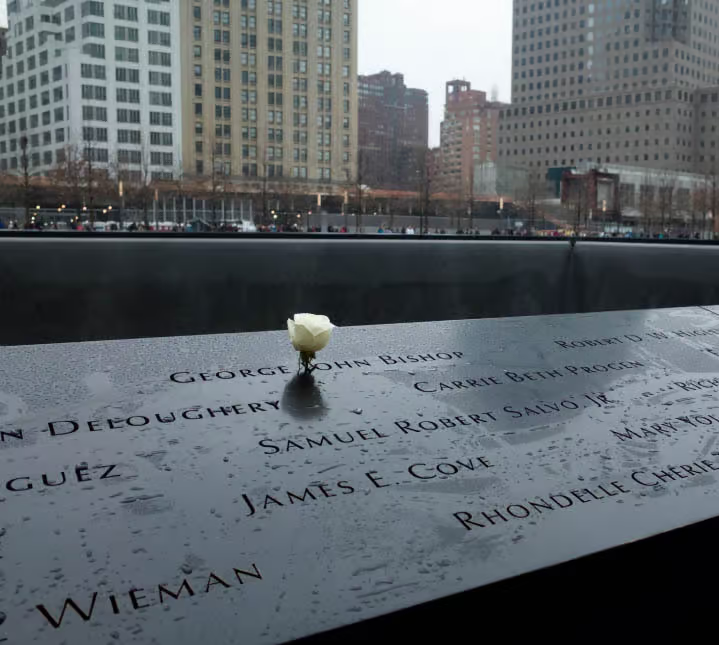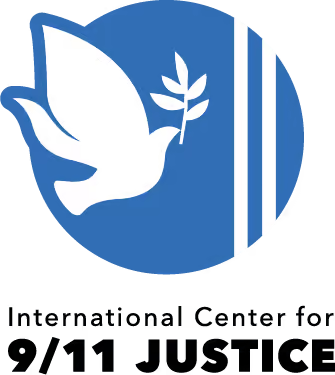In January 1985, the CIA delivers a secret report about the criminal BCCI back to the Treasury Department. In an extraordinary departure from standard procedure, the report is hand-delivered by a CIA agent and printed on plain paper with no markings to indicate it came from the CIA. The report is given to Douglas Mulholland, a Treasury official serving as the CIA’s main link to that department. Mulholland then hand-delivers the report to Treasury Secretary Donald Regan, and calls its contents “dynamite.” It is not known what is in the report, but the Treasury Department sends back word that it wants to know more. However, as Time magazine reporters Jonathan Beaty and S. C. Gwynne will later relate: “Suddenly, and for no apparent reason, Treasury lost all interest in BCCI.… Someone had… gotten to Regan and Mulholland, and the message had been unambiguous: back off.” The Treasury Department takes no action against BCCI, even though the evidence of the bank’s involvement in money laundering by this time is overwhelming. [Beaty and Gwynne, 1993, pp. 325-328]
Mid 1980s: MI6 Agent Gets to Know Future Al-Qaeda Leaders
Alastair Crooke, an agent for the British intelligence service MI6, helps out with the anti-Soviet jihad and gets “to know some of the militants who would become leaders of al-Qaeda.” [New Statesman, 4/11/2005] He also spends “years during the 1980s with Osama Bin Laden’s henchmen in Afghanistan.” [Sunday Express, 6/12/2005] Crooke, whose role is to coordinate British assistance to the mujaheddin, will later be described by CIA officer Milton Bearden as “a natural on the frontier” and “a British agent straight out of the Great Game.” Details of exactly which future al-Qaeda leaders he gets to know are not available. In the 1990s, Crooke will move to Palestine, where he will come into contact with Hamas leaders. [New Statesman, 4/11/2005]
Mid-1980s: Osama Bin Laden’s Brother Is Allegedly Involved in the Iran-Contra Affair
Quoting a French intelligence report posted by PBS Frontline, The New Yorker reports, “During the nineteen-eighties, when the Reagan administration secretly arranged for an estimated $34 million to be funneled through Saudi Arabia to the Contras in Nicaragua, [Osama’s eldest brother] Salem bin Laden aided in this cause.” [PBS Frontline, 2001; New Yorker, 11/5/2001]
Mid-1980s: ISI Head Regularly Meets with Bin Laden
According to controversial author Gerald Posner, ex-CIA officials claim that General Akhtar Abdur Rahman, Pakistani ISI’s head from 1980 to 1987, regularly meets bin Laden in Peshawar, Pakistan. The ISI and bin Laden form a partnership that forces Afghan tribal warlords to pay a “tax” on the opium trade. By 1985, bin Laden and the ISI are splitting annual profits of up to $100 million a year. [Posner, 2003, pp. 29]
February 1985: Reagan Possibly Views Afghan Video Made by Bin Laden Brothers
According to author Steve Coll, US President Ronald Reagan may be given a briefing about Osama bin Laden’s charitable work in the Soviet-Afghan War, and may also see a video showing aspects of the work. If this is true, the briefing and video would come from Salem bin Laden, head of the bin Laden family, who made the video recently when visiting his brother Osama (see Early 1985).
Summit – Salem is in Washington at this time to attend a summit between Reagan and King Fahd of Saudi Arabia. It is unclear what Salem’s role is at the summit, although one of the key areas of co-operation between the US and Saudi Arabia is support for the Afghan mujaheddin, and his brother Osama is a key figure who frequently travels between Saudi Arabia and mujaheddin bases in Pakistan. An attorney will later recall seeing a photograph of Salem and Reagan together at the meeting, but the photo will apparently be destroyed before it can be published.
Possible Briefing – Coll will comment: “It seems probable that when Salem reached Washington that winter, he would have passed to King Fahd, if not directly to the White House, the video evidence he had just gathered documenting Osama’s humanitarian work on the Afghan frontier.” Coll will add that Reagan takes pains to acknowledge Saudi Arabia’s efforts to support Afghan refugees on the Pakistani frontier, saying: “Their many humanitarian contributions touch us deeply.… Saudi aid to refugees uprooted from their homes in Afghanistan has not gone unnoticed here.” Coll will point out that the leading Saudi provider of such aid is Osama bin Laden, and that “Reagan’s language suggested that he had been given at least a general briefing about Osama’s work.” [Coll, 2008, pp. 11-12]
March 1985: Reagan Sharply Increases Covert Support to Afghan Rebels
President Reagan issues a secret National Security Decision Directive to sharply escalate US covert action in Afghanistan. No longer content to simply help harass Soviet forces in Afghanistan, the directive leads to sharp increase in military and other aid to the mujaheddin to completely defeat the Soviets. The CIA begins supplying mujaheddin rebels with “extensive satellite reconnaissance data of Soviet targets on the Afghan battlefield, plans for military operations based on the satellite intelligence, intercepts of Soviet communications, secret communications networks for the rebels, delayed timing devices for tons of C-4 plastic explosives for urban sabotage and sophisticated guerrilla attacks, long-range sniper rifles, a targeting device for mortars that was linked to a US Navy satellite, wire-guided anti-tank missiles, and other equipment.” CIA Director William Casey also sees the directive as an opportunity to launch attacks inside the Soviet Union itself (see 1984-March 1985 and 1985-1987). [Washington Post, 7/19/1992]
July 1985: Report Outlines Terrorism Threat to WTC
While the Office of Special Planning is still working on its report about the vulnerability of the World Trade Center to terrorist attack, the New York Port Authority hired security consultant Charles Schnabolk to also review the center’s security systems. [UExpress (.com), 10/12/2001; New York County Supreme Court, 1/20/2004] Schnabolk was involved in designing the original security system when the WTC complex was built. [Institue for Design Professionals, 2009; The Security Design Group, 2010] This month his secret report, titled “Terrorism Threat Perspective and Proposed Response for the World Trade Center” is released. It sets out four levels of possible terrorism against the center, and gives examples of each: ”(1) PREDICTABLE—Bomb threats; (2) PROBABLE—Bombing attempts, computer crime; (3) POSSIBLE—Hostage taking; (4) CATASTROPHIC—Aerial bombing, chemical agents in water supply or air conditioning (caused by agents of a foreign government or a programmed suicide).” Similar to other reports in the mid-1980s, it also warns that the WTC “is highly vulnerable through the parking lot.” [UExpress (.com), 10/12/2001; New York County Supreme Court, 1/20/2004]
August 1985: Pressler Amendment Passed, Requiring Yearly Certification that Pakistan Does Not Have Nuclear Weapons
The US Congress passes the “Pressler Amendment,” requiring the president to certify that Pakistan does not have nuclear weapons every year. The amendment was championed by Senator Larry Pressler (R-SD). If the president does not issue such certification, Pakistan cannot not get any foreign aid from the US. Presidents Reagan and Bush will falsely certify Pakistan does not have nuclear weapons several times (see August 1985-October 1990). Journalist Seymour Hersh will later comment: “There is indisputable evidence that Pakistan has been able to escape public scrutiny for its violations of the law because senior officials of the Reagan and the Bush administrations chose not to share the intelligence about nuclear purchases with Congress. The two Republican administrations obviously feared that the legislators, who had voted for the Solarz (see August 1985) and Pressler Amendments, would cut off funds for the war against the Soviet Union in Afghanistan. It was yet another clash between a much desired foreign-policy goal and the law.” [New Yorker, 3/29/1993]
August 1985: Solarz Amendment Passed Penalizing Nations Exporting Nuclear Materials from US
The “Solarz Amendment” to the Foreign Assistance Act is passed by the US Congress and becomes law. The amendment, championed by Congressman Stephen Solarz (D-NY), cuts off all military and economic aid to purportedly non-nuclear nations that illegally export or attempt to export nuclear-related materials from the US. [New Yorker, 3/29/1993] There are subsequently several examples of Pakistan exporting nuclear weapons technology from the US, but they are not punished until the end of the Soviet-Afghan War (see August 1985-October 1990).
August 1985-October 1990: White House Defies Congress and Allows Pakistan’s Nuclear Weapons Program to Progress
In 1985, US Congress passes legislation requiring US economic sanctions on Pakistan unless the White House can certify that Pakistan has not embarked on a nuclear weapons program (see August 1985 and August 1985). The White House certifies this every year until 1990 (see 1987-1989). However, it is known all the time that Pakistan does have a continuing nuclear program. For instance, in 1983 a State Department memo said Pakistan clearly has a nuclear weapons program that relies on stolen European technology. Pakistan successfully builds a nuclear bomb in 1987 but does not test it to keep it a secret (see 1987). With the Soviet-Afghan war ending in 1989, the US no longer relies on Pakistan to contain the Soviet Union. So in 1990 the Pakistani nuclear program is finally recognized and sweeping sanctions are applied (see June 1989). [Gannon, 2005] Journalist Seymour Hersh will comment, “The certification process became farcical in the last years of the Reagan Administration, whose yearly certification—despite explicit American intelligence about Pakistan’s nuclear-weapons program—was seen as little more than a payoff to the Pakistani leadership for its support in Afghanistan.” [New Yorker, 3/29/1993] The government of Pakistan will keep their nuclear program a secret until they successfully test a nuclear weapon in 1998 (see May 28, 1998).


